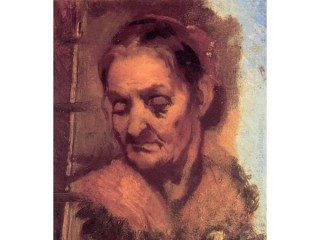
Jean-Baptiste Carpeaux biography
Date of birth : 1827-05-11
Date of death : 1875-10-12
Birthplace : Valenciennes, France
Nationality : French
Category : Arts and Entertainment
Last modified : 2011-07-21
Credited as : Artist sculptor, painter,
Jean-Baptiste Carpeaux was born on May 11, 1827, in Valenciennes, the son of a mason. In 1842 he studied in Paris under the leading romantic sculptor, Francois Rude. The following year Carpeaux worked at the atelier of the sculptor Francisque Duret. Beginning in 1846 Carpeaux studied at the Ecole des Beaux-Arts.
In 1854 Carpeaux won the Prix de Rome for his neoclassic statue Hector Imploring the Gods for His Son, Astyanax. At this time he also worked in a tempestuous romantic vein, as may be seen in Ugolino and His Starving Sons (1857-1861), which was executed and exhibited in Rome. The literary inspiration of this work was Dante's Inferno, where Carpeaux found the description of the suffering of Ugolino, who had to sit by in the Tower of Hunger as his sons starved to death. Its artistic inspiration was Michelangelo's Last Judgment. The group was well received in Italy but was criticized by the academicians in Paris, who held up its execution in marble until 1867, when it was financed by private funds to be shown at the Universal Exhibition at Paris.
Yet despite the conservative opposition Carpeaux was able to obtain important commissions. For the new wing of the Louvre, the Pavillon de Flore, he executed the pedimental figures (1863), comprising an Allegory of Imperial France, as well as a Triumph of Flora, a deeply cut relief in which light played dramatically over the surfaces of the ebulliently sensuous nudes.
Carpeaux's best-known work today is The Dance, a group in stone which the architect Charles Garnier commissioned in 1865 for the facade of his new Paris Opera. Carpeaux worked on a series of models for 2 years. The work couples the intelligent control based on a neoclassic framework with a spirit of full-blown sensuousness. The rhythm of the figures, the effective openness of the composition, and the vigorous play of light and dark were ignored by many contemporary critics, who found only that the work was lewd. In his Fountain of the World's Four Corners, erected in Paris in 1874, four female nudes support a sphere above their heads. The vitality and animation of some of the figures show Carpeaux to be a precursor of Auguste Rodin and other pioneers of modern sculpture.
Carpeaux also produced a number of fine portrait busts, including those of the architect Vaudemer (1859); Charles Garnier (1869); Dr. Flaubert, the brother of the novelist Gustave Flaubert (1874); and the younger Alexandre Dumas (1874). Toward the end of his career he enjoyed the favor of Napoleon III and could take his pick of portrait commissions from the leaders of the Second Empire. Carpeaux died in Courbevoie on Oct. 12, 1875.
















